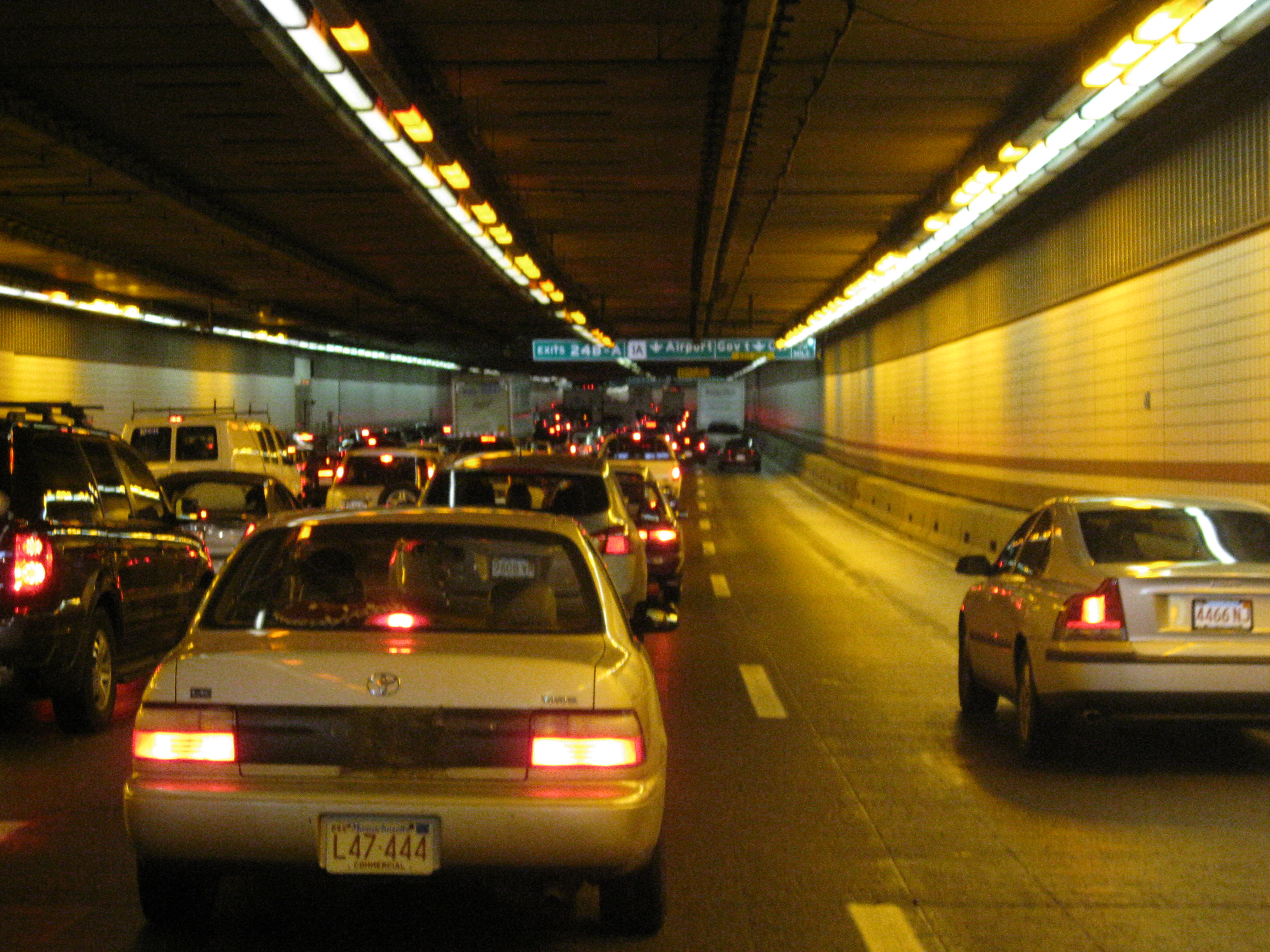Some have proposed a "Vehicle Miles Traveled" tax as a replacement for the gasoline tax. The idea is that as cars get more fuel efficient, they will pay less gas tax for road repair, but they still do the same road damage.
 |
| Should we require vehicle tracking? Or not? (source) |
The problem with VMT is that in order to measure it, you need some sort of tracking device. The odometer is one possibility, and it already must be reported in various ways. But it is a fairly crude way to measure, and doesn't distinguish between different types of roads. For example, I have friends who race their street vehicles on private speedways. That would count against them, even though public funds are not paying for the repair of that road. The other tracking device proposed is a GPS unit of some sort. However, this raises all kinds of nasty questions about privacy.
Let's take a step back. What are we trying to pay for?
- Funding of road repair
- Mitigation of gasoline pollution
- Reduction of congestion (trading money for time)
- Paying some of the capital costs of roads
And some of our options for paying these costs?
- The gasoline tax is pretty directly linked to issue (2). More gasoline used, more pollution emitted. There is a correspondence between gasoline used and road damage incurred, but it is somewhat shaky and complicated by the fact that there are many kinds of vehicles out there. Same for (4). It does not help with congestion except by possibly discouraging people from making wasteful trips.
- A VMT tax would largely behave like a gasoline tax depending upon implementation, except that it could more fairly handle issue (1), and it might be possible to integrate congestion pricing, though that is not necessarily the case.
- Paying for everything from the general funds would imply that income, sales and/or property taxes would have to rise to cover automobile-related expenses. You can do (1), (2), and (4) this way, but not (3) at all. The justification for this is that everybody benefits from cars, therefore everyone should pay extra taxes for them. I find this justification weak, and I'm pretty sure it would be a hard sell if it had to be made on the merits. On the other hand, this method has basically taken over a large portion of the costs of (1), (2) and (4), as general state and federal monies get poured into projects that are not able to be funded by the currently anemic gasoline tax.
My preferred solution is to bring the gasoline tax back into line with current costs. The federal gasoline tax
hasn't been raised since 1993 and it is a flat 18.4 cents per gallon, not a percentage like most other taxes. This means it falls behind inflation every year. Additional state taxes
are similar. It is well known that the current gasoline taxes
do not even pay enough to cover the highway system, much less local roads.
However, for fairness sake, the gasoline tax should not be the only mechanism. The fact is,
trucks damage roads far more than private cars. In fact, analysis has shown that
axle weight raised to the 4th power is approximately proportional to road damage. That means a fully loaded tractor semi will do 1000 times the damage of a fully loaded passenger van. Trucks, and to some extent buses, are getting a free ride on the nation's interstate highway system and local roads. There are only
a few states which attempt to recover those costs, and most fall short. It needs to be done at a federal level and consistent nationwide.
 |
| Heavy vehicles damage roads. (source) |
Trucks and buses are commercial vehicles: businesses want to know where their vehicles go. There are already many limitations on where they can travel, as well. Therefore GPS-based tracking is already used by many commercial vehicles. Measuring VMT for trucks and buses should be fairly uncontroversial, unlike personal automobiles. The usage of these heavy vehicles is also much more significant towards causing road damage than that of small cars. The external costs of private vehicle usage can continue to be recovered through a percentage-based gasoline tax, which stays up to date, which also has a side benefit of encouraging people to buy automobiles with fuel-efficient engines.
That leaves issue number (3), how to address congestion in cities. Currently, most people pay for congestion by sitting in their car and fuming at traffic. I would prefer seeing a system where you pay a market price for using a roadway, and that price would be set at a rate which keeps traffic flowing smoothly. Therefore, you effectively save time by spending money. The first argument most people make against congestion pricing is that it is unfair to poor or middle class households. However, that is a weak argument because of two things: (a) lower income folks value their time just as much as anyone else, and (b) you can offset those costs using tax credits or other programs that help the truly needy.
 |
| The high cost of free roads. (source) |
The fact of the matter is, we already have a solution for moving large amounts of people around cities without causing congestion: it's called public transportation. However, mass transit has high fixed costs and low marginal revenue, so it cannot effectively compete with government subsidized roads. If roads were priced according to their true costs, then mass transit would be a lot healthier in this country, and possibly even profitable for cities to operate (as it is
in Hong Kong). Congestion pricing can be enacted at a local level and without massive government intrusion into cars. It is a free market solution to a resource scarcity problem.








